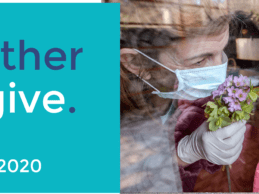
Every nonprofit organization knows the end of the year is a critical time to appeal to members, supporters, benefactors, and the like for contributions, to show appreciation, and to build enthusiasm for the future. As BCS’s grant-writing partner, Amanda Garry Aliperta, Founder and Principal of Momentum Nonprofit Strategies, LLC puts it:
“The end of the year is of course a critical time for solicitation, but it's also a wonderful time to steward to those who have recently given. Consider creating a simple mailer with key data and inspiring stories that can be sent to both those you are soliciting and those you are thanking. Draft two letters to accompany this piece; one that requests support, and one that expresses gratitude for recent support, and divide your recipient list accordingly.”
Handling years’ end well can be a difference-maker for any nonprofit, and to truly maximize the benefits for your organization, you should focus on using all available tools and resources to boost engagement as 2020 draws nearer the close. Many of the most important such tools are digital, and these digital platforms for engagement are likely to be even more important than usual in 2020.
When it comes to digital appeals and engagement, there is no one-size-fits-all approach that will work for every nonprofit. Nevertheless, below we discuss four of the simplest and most effective ways to use digital technology this year-end.
1. Website Optimization
Your website must be optimized to encourage conversions from visitors to supporters. It should be immediately obvious to all visitors how to start or keep supporting your organization, where their money will go, and the good it can do for the world.
Some simple tweaks can help substantially improve your results. For example, when a visitor inputs a donation, the default option should be set as recurring, because doing so will drive more people to support your organization regularly instead of just one time. (And those are the supporters that truly drive your organization towards its mission.)
Your website should also tell a compelling story. One of the best ways to make this happen is to gather testimonials from supporters and the people that your organization has helped. Such testimonials humanize your nonprofit and put a face to the work you do, which makes potential supporters connect more readily with the work you want to do! Video is a powerful medium for storytelling when the production value is high, so make sure that you have decent quality video and audio, and pay close attention to lighting.
2. Designing your Annual and Impact Reports
As you work to design year-end appeals, do so with your annual and impact reports in mind. You’ll want to put the best possible face on your organization in these reports for your board and the public, so make sure that your appeals are centered around the parts of your organization your most concentrated on and focused on emphasizing. Your annual and impact reports are your opportunities to encompass all the work you've done throughout the year. It also happens to be an amazing marketing opportunity to highlight the contributions you're sharing with the community. Think of this as one of your core marketing pieces. Or at least the center of what should turn into an incredible annual impact campaign.
3. Email Automation
You have to ask for what you want. Gather the list of your current supporters and your potential supporters and create an automated email program that targets them and reminds them to include your organization in their year-end giving! Tell your story. Do it in bite-sized pieces. Tell them why they want to be a part of what you're doing. Yes, you're doing great things, but at the end of the day, when making your ask, it's about them. They feel good about making this donation. What are they getting? Then tell them what you're going to do with their donation and how you're going to deliver upon it. Tailoring these messages to acknowledge their status as a current donor (while asking them to do more) or inviting them to become a supporter is key!
4. Meet your Audience Where They're At
Know your audience. This means knowing as much as possible about their demographics, psychographics, and behavioral tendencies. How do they like to engage with your organization? Are they email people or are mailers the best way to get in touch? For many organizations, the biggest existing donor base is 45 and older, and those people might be best reached by direct mailers. On the other hand, when you’re looking to grow that base or expand to the next generation of supporters, it’s important to keep in mind that your younger audience is not as likely to respond well to direct mailers.
Engaging at the family level can also be effective at building support and enthusiasm for your organization. Tracy Josetti is the founder of Engage to Raise, who has created resources intended to help families determine their values, how much to give to charities, and how else they might wish to be involved. Tracy recommends "finding ways to get family involved with your organization, whether through sight visits, volunteer opportunities, and involvement with the organization's annual reports. COVID-19 has forced many an organization to get creative with how to involve its supporters, but those that adapt well to new ways of doing things can expect a reward of more loyal backers." And even if those folks are not able to contribute now, Tracy says, "they will become close to your organization and hopefully become a regular supporter down the road."
Overall, the more you know about your supporters, the better and more focused your efforts can be, and the more efficient and cost-effective your outreach will be.
This list is of course only a start, and what works best will vary by nonprofit. But we think applying these principles will help give your organization the best chance for a strong finish 2020!

Melissa Executive Assistant
Melissa has helped run large organizations for close to a decade and is excited to bring her mad organizational skills to the Brainchild Team. Melissa helps keep Brainchild’s engines running smoothly behind the scenes. When she’s not working, Melissa enjoys playing with her three kids, and occasionally finds time for some gardening and indulging in binging on BRAVO television shows. Don't judge.
more posts by Melissa →Related posts
-
 Nonprofit
Nonprofit -
 Content Marketing, Nonprofit
Content Marketing, Nonprofit -
 Small Business, Digital Marketing, Nonprofit
Small Business, Digital Marketing, Nonprofit




